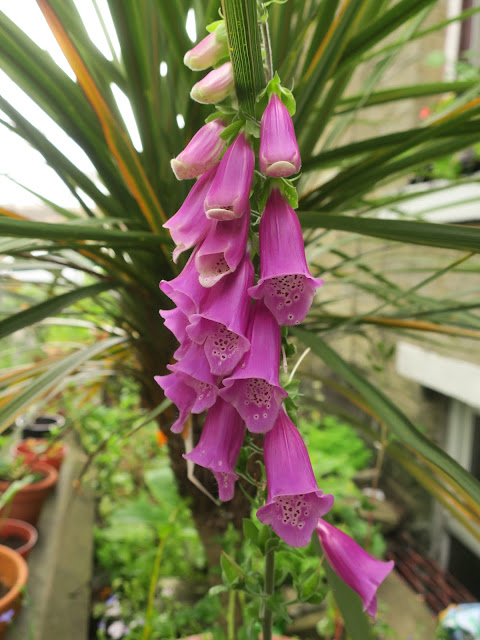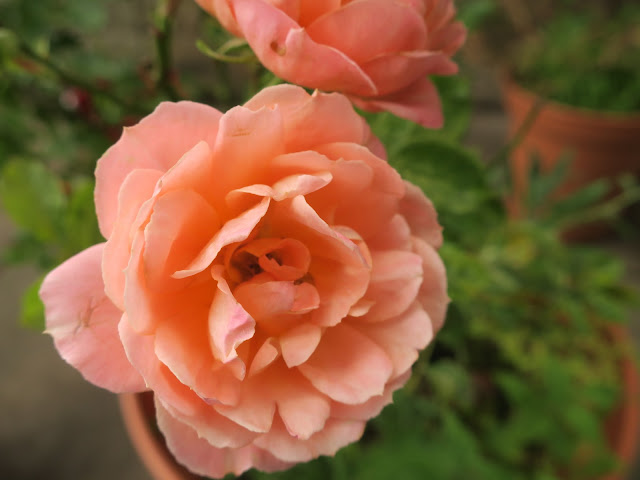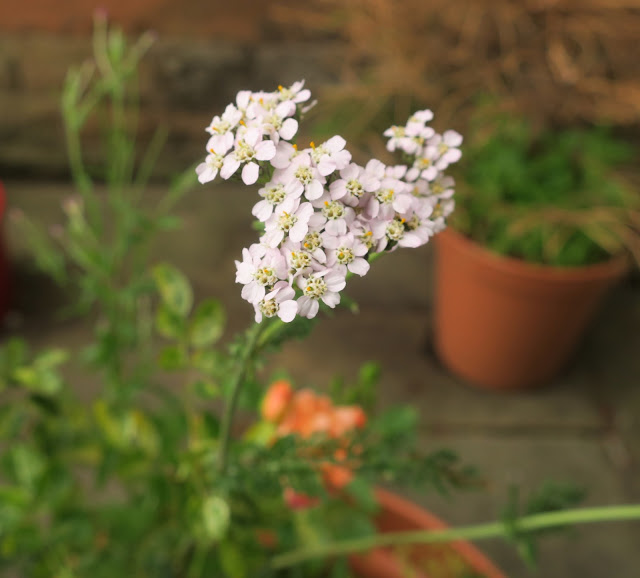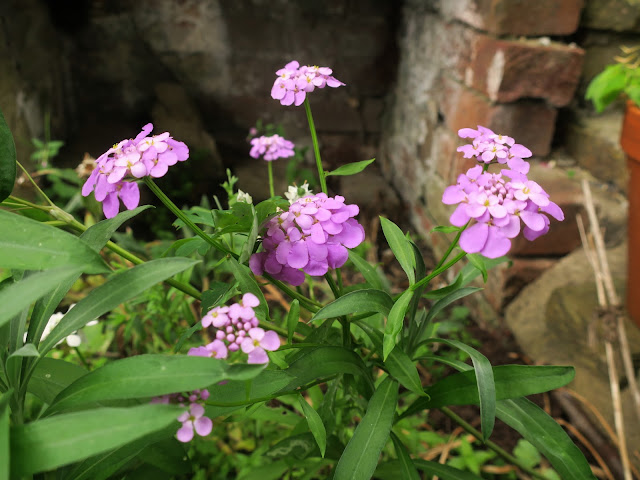 |
My gardening gloves at the allotment disintegrated during
the long months of recovery from leukaemia when I could not touch
soil because of the microbes living in it. |
I'll begin with apologies. I don't mean to be continually starting and stopping. It just happens. There are so many things to do! I've begun going to my allotment again. I've been fighting a battle with rats in my house. I spend a lot of time picking up litter in my neighbourhood. I take photos and write posts in my head - but never get round to putting them on screen. Be assured, though, that I am not forgetting you.
In my head, I planned a whole series of posts about how the terrain changes as we climb up from the river and canal at the foot of the hill, through the town and up to the moor. I was watching to see when the dandelions opened on the different levels. I was going to tell you but . . .
 |
| Doorstep on 1st June 2021 |
When it came to June I thought I would take part in the '30 Days Wild' challenge with the
Wildlife Trusts. I tidied up outside my front door so I could happily sit on the step to have breakfast on the first day and look around at the plants and creatures which happened to be there. Indeed, I
did sit on my doorstep for breakfast that day . . . but got distracted by the adventures of a relative who was trying to get back to England after working in Austria and there are so many hospital appointments to go to and neighbours to chat to and spikey things to be pulled out of wooden floorboards and all sorts of other distractions in daily life that . . . well . . . the days go by . . . and I've not been writing any 'wild' posts for June.
 |
The languages on the notice at the entrance to Lister Lane Cemetery gives you clues
about our neighbourhood - English, Urdu, Bengali and Czech. |
However, one thing I did do recently was to visit Lister Lane Cemetery on 31st May when it was awash with aquilegia.
 |
| Lister Lane Cemetery awash with aquilegia, May 31st 2021 |
Every year it is awash with something . . . poppies, evening primrose, foxgloves . . . something striking and everywhere. This year, it's aquilegia.
 |
| The chapel no longer has a roof. Instead, it has bee hives! |
In other years I've peered through the gates but only once before have I been in. On that occasion one of the interesting things about it was that there was a set of stocks - the old kind of punishment where people were fixed between planks of wood at their wrists and at their ankles so anyone who felt like it could throw rubbish at them - old fruit and stuff. I doubt the Friends of Lister Lane Cemetery who look after it nowadays had really been having fun at the expense of their less popular neighbours but it was a surprising piece of 'street furniture' to come across all the same!

Lister Lane Cemetery in Halifax was opened in 1841 as a commercial enterprise. As someone who grew up familiar with Church of England country churchyards the idea of a burial place as a money-making scheme came as something of a surprise. But the conventional churchyards of the town at the time were jam-packed and lives were short and some people were unwelcome in the religious graveyards even in death and they were found places in Lister Lane - people who committed suicide, people of different denominations.
 |
I am struck forcefully by how closely
many of the graves are packed together. Just enough space
for these flowers to grow between. |
 |
Forget-me-nots between paving stones in a wide
walkway leading to the chapel ruins. |
The soot on the obelisks, the way the graves are crammed together, the stories told in the engravings . . . the cemetery still says something about what life was like here in the nineteenth century - dark, crowded, brief, rich with experience.
All sorts of people were rammed in, wealthy and poor, with crisply cut, durable gravestones and obelisks, walkways for the living, a sense of welcome and peace and now, thanks to the those who tend it, the graves are covered in flowers. Even the paths have flowers sprouting out of them. It's one of the wonderful things about the 'Calderdale Style'. Even in local parks there's a relaxing and admirable mixture between the formal and informal, the cultivated and the wild.
I'm hoping you will like it here as much as I do for we will be returning!
 |
| Ivy-leafed Toadflax on steps at the cemetery. |
The last burial at Lister Lane was in 1963 - when the mills were still belching out smoke.
The other day a neighbour described coming home from work on a bus in a smog of the 1960s. The smog was so thick the driver couldn't see where he was going. The conductor had to get out and walk a couple of feet ahead - and beckon to show it was safe for the bus to move forward. We now live in different times. The air has cleared, the skies are often blue (and there is less snow).
 |
California poppies and Aquilegia.
|
There's an open day every year on 4th July - with guided tours of the cemetery. If you are in the area you might like to take part.
Here's a link.
And you might also like to follow the twitter account of The Friends of Lister Lane Cemetery where the graves are listed over time and the lives of the people who lie there narrated.
__________
Description of Halifax 1810 - 1850 on 'From Weaver to Web'
(An Online Visual Archive of Calderdale History)




































